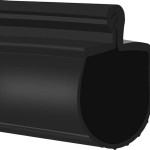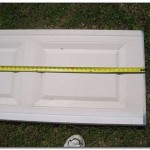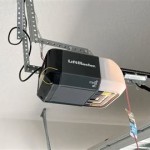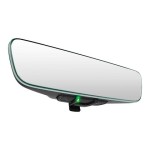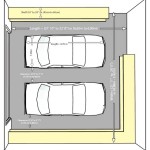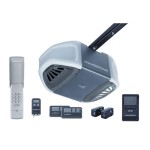Garage Door Seals for the Bottom of Doors
Garage door seals for the bottom of doors play a crucial role in maintaining a comfortable, energy-efficient, and secure garage space. While often overlooked, these seals offer several benefits that can significantly enhance your garage's functionality and prevent costly issues in the long run.
Benefits of Garage Door Bottom Seals
1. Improved Energy Efficiency: Air leaks around the bottom of the garage door can allow cold air to enter and warm air to escape. Installing a bottom seal effectively blocks these gaps, reducing heat loss in winter and keeping the garage cooler in summer, resulting in lower energy bills.
2. Reduced Noise and Dust: Gaps at the bottom of the door allow noise and dust to enter the garage from outside. A bottom seal creates a tight barrier, minimizing the intrusion of unwanted noise and keeping the garage cleaner.
3. Protection from Rain and Snow: During heavy rain or snowfall, water can seep under the garage door and cause damage to the floor or belongings. A bottom seal prevents water from entering, protecting your garage and its contents from moisture and potential damage.
4. Enhanced Security: Gaps at the bottom of the door provide an easy entry point for intruders. A bottom seal acts as a deterrent by eliminating this potential vulnerability, making it more difficult for unauthorized individuals to access your garage.
5. Reduced Pests: Insects and other pests can crawl into the garage through unsealed gaps. A bottom seal blocks these entry points, preventing pests from entering and infesting your garage.
Types of Garage Door Bottom Seals
There are several types of garage door bottom seals available, each with its own unique characteristics:
1. Vinyl Seals: Vinyl seals are flexible and durable, making them well-suited for most garage doors. They are affordable and easy to install.
2. Rubber Seals: Rubber seals offer excellent sealing capabilities and resistance to UV rays and extreme temperatures. They are more expensive than vinyl seals, but they last longer.
3. Brush Seals: Brush seals consist of a row of bristles that sweep along the floor, creating a tight seal. They are effective at keeping out dust and pests but may not be as durable as other types of seals.
Proper Installation and Maintenance
For optimal performance, garage door bottom seals should be installed correctly. Measure the length of the bottom edge of your garage door and choose a seal that fits snugly. Clean the surface where the seal will be attached and remove any debris. Peel off the backing of the seal and press it firmly into place, ensuring that there are no gaps or overlaps.
To maintain the effectiveness of the seal, inspect it regularly for signs of damage or wear. Replace the seal if it becomes torn, cracked, or no longer fits tightly against the floor. Keep the seal clean by wiping it down with a damp cloth.
Conclusion
Garage door seals for the bottom of the door are an essential component for any garage. By effectively blocking gaps and providing a tight seal, they enhance energy efficiency, reduce noise and dust, protect from rain and snow, improve security, and prevent pests. Choosing the right type of seal and installing it correctly is crucial for optimal performance and long-lasting benefits. By incorporating garage door bottom seals into your garage, you can create a more comfortable, energy-efficient, and secure space that meets your needs.
How To Replace Weather Stripping On A Garage Door

Guide Garage Door Weather Seal Ssc

How To Replace Your Damaged Garage Door Bottom Seal Not As Easy You Think The Diy Truth

Common Garage Door Seal Types And How To Maintain Them A Better

Types Of Garage Door Bottom Seals Precision Services

Epdm Rubber Garage Door Bottom Kit Frost King Weatherization Products

Garage Door Weather Seal Replacement Services A1 Service

Guide Garage Door Weather Seal Ssc

How To Replace Garage Door Bottom Seal Youtube

Weather Defender The Ultimate Garage Door Threshold Seal


